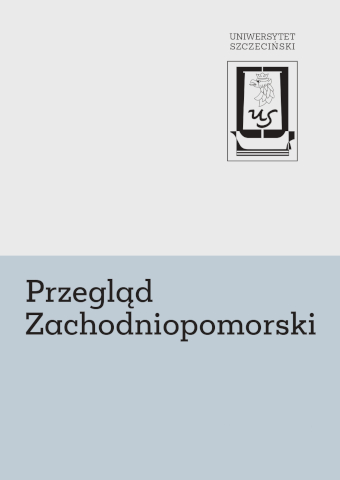







| Authors: |
Anna
Łysiak-Łątkowska
Instytut Historii Uniwersytet Gdański |
| Keywords: | French emigrants Stanislas Jean de Boufflers South Prussia Wymysłów Prussian colonization policy |
| Data publikacji całości: | 2020 |
| Page range: | 19 (41-59) |
| 1. | Źródła archiwalne |
| 2. | Archives Nationales France: série AF: archives du pouvoir exécutif 1789–1815, III: Directoire exécutif: Relations extérieures (an IV-an VIII), 76: Prusse (1792-an VIII), Prusse Correspondance des agents français à Berlin et en Suisse, Correspondance relative notamment aux Français émigrés en Prusse (an IV-an VII) dossier 318 (brak paginacji). série AF: archives du pouvoir exécutif 1789–1815, III: Directoire exécutif: Relations extérieures (an IV-an VIII), 74: Pologne (an II- an VI) dossier 301 (brak paginacji). |
| 3. | Archiwum Główne Akt Dawnych: |
| 4. | Der Zustand der Herrschaft Pabianice, deren Einziehung und künftige Verwaltung. 1796–1797, Generalne Dyrektorium Prus Południowych nr 1257, Seria: 1 Uniwersalia. Archiwum Krakowskiej Kapituły Katedralnej: Acta actorum capituli ecclesiae cathedralis Cracoviensis 26: 30 IX 1793 – 20 V 1803. Libri privilegiorum 5/5. |
| 5. | Inwentarz rewizji różnych dóbr wiejskich Krakowskiej Kapituły Katedralnej V/1847. |
| 6. | Archiwum Państwowe w Łodzi: |
| 7. | Zbiór rękopisów archiwalnych 1520–1914, Inwentarz włości pabianickiej 1737, Lustracja dóbr pabianickich kapituły krakowskiej z 1737 roku wraz z suplementum z 1743 roku. |
| 8. | Zbiór szczątków archiwów podworskich, Przywilej czyli zapis wieczysto-dzierżawczy folwarku Wymysłów (Ekonomia Pabianice). |
| 9. | Zbiór szczątków archiwów podworskich, Regestr kolonii Wymysłów. |
| 10. | Opracowania |
| 11. | Adamek, Robert, Tadeusz Nowak. Zarys dziejów Dobronia i okolicznych miejscowości do 1939 roku (wchodzących w skład obecnej gminy Dobroń). Łask–Dobroń: Zarząd Gminy Dobroń, 2000. |
| 12. | Baruch, Maksymilian. Pabianice, Rzgów i wsie okoliczne. Studia i szkice historyczne z dziejów dawnej włości kapituły krakowskiej w Sieradzkiem i Łęczyckiem. Pabianice 1930. |
| 13. | Boffa, Massimo, „Emigrées”. W: Dictionnaire critique de la Révolution Française, François Furet, Mona Ozouf, 346–354. Paris: Flamarion, 1988. |
| 14. | Carrell Sue. Introduction do La comtesse de Sabran et le chevalier de Boufflers, Le Lit bleu, correspondance 1777–1785, Sue Carell, 23–40. Paris: Tallendier, 2009. |
| 15. | Croze-Lemercier, Pierre de. Le Chevalier de Boufflers et La Comtesse de Sabran. Paris: Calman Lévy, 1894. |
| 16. | Croze-Lemecier, Pierre de, Gaston Maugras. Delphine de Sabran, marquise de Custine. Paris: Libraire Plon, 1912. Dostęp 22.01.2019. https://archive.org/details/delphinedesabra00maug/mode/2up. |
| 17. | Diesbach, Ghislain de. Histoire de l’émigration 1789-1814. Édition revue, corrigée, augmentée. Paris: Perrin, 1998. |
| 18. | Figlus, Tomasz, Staniek, Katarzyna. „Wielokulturowość wsi w wymiarze lokalnym na przykładzie gminy Dobroń”. Space-Society-Economy 20 (2017): 125–145. |
| 19. | Fijałek, Jan. Pabianice i włość pabianicka w drugiej połowie XVII i XVIII wieku. Łódź: Uniwersytet Łódzki, 1952. |
| 20. | Heike, Otto. 150 Jahre Schwabensiedlungen in Polen 1795–1945. Leverkusen: nakł. autora, 1979. |
| 21. | Hőpel, Thomas. „French Émigrés in Prussia”. W: The French Émigrés in Europe and the Struggle against Revolution 1789–1814, red. Kirsty Carpenter, Philip Mansel, 101–108. New York: St. Martin’s Press, 1999. |
| 22. | Ingleheart, Jennifer. Two Thousand Years of Solitude: Exile After Ovid. Oxford University Press, 2012. |
| 23. | Skrodzki, Eugeniusz. Wieczory piątkowe i inne gawędy, oprac. Mieczysław Opałek. Warszawa: Państwowy Instytut Wydawniczy, 1962. |
| 24. | Trouncer, Margaret. Oriflamme: Being the True Story of Madame de Sabran and Her |
| 25. | Lover the Chevalier de Boufflers During the Times of Marie-Antoinette and the Revolutio. London: MacDonald & Co, 1944. |
| 26. | Wąsicki, Jan. Ziemie polskie pod zaborem pruskim. Prusy Południowe 1793–1806. Studium historycznoprawne. Wrocław: Zakład im. Ossolińskich, 1957. |
| 27. | Woźniak, Krzysztof. Niemieckie osadnictwo wiejskie między Prosną a Pilicą i Wisłą od lat 70. XVIII wieku do 1866. Proces i jego interpretacje. Łódź: Wydawnictwo Uniwersytetu Łódzkiego, 2013. |
| 28. | Vincent-Yagüe Jara, Antonio José de. „El viaje del caballero de Boufflers a Senegal y sue correspondencie con Eleonore de Sabran (The journey of the chevalier de Boufflers to Senegal and his correspondence with Éléonore de Sabran)”. Estudios Románicos 21 (2012): 153–164. |
| 29. | Zajączkowski, Stanisław. „Opole chropskie. Przyczynek do genezy dawnych dóbr pabianickich kapituły krakowskiej. Rocznik Łódzki 5 (1961): 131–154. |
| 30. | Zajączkowski, Stanisław. „Lokacje wsi na prawie niemieckim w dobrach pabianickich kapituły krakowskiej”. Pabianiciana 3 (1995): 27–42. |
| 31. | „Mieszkał tu markiz i hrabiowie”. Życie Pabianic, 27.07.2013. Dostęp 18.11.2018. https://www.zyciepabianic.pl/informacje/historia/mieszkal-tu-markiz.html. |